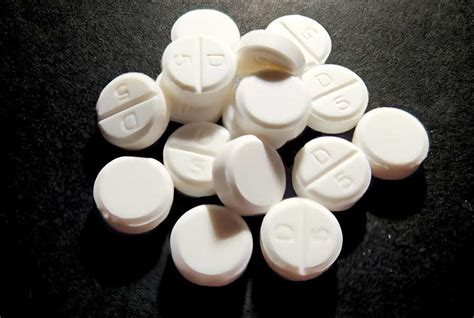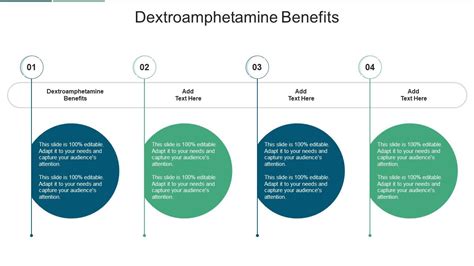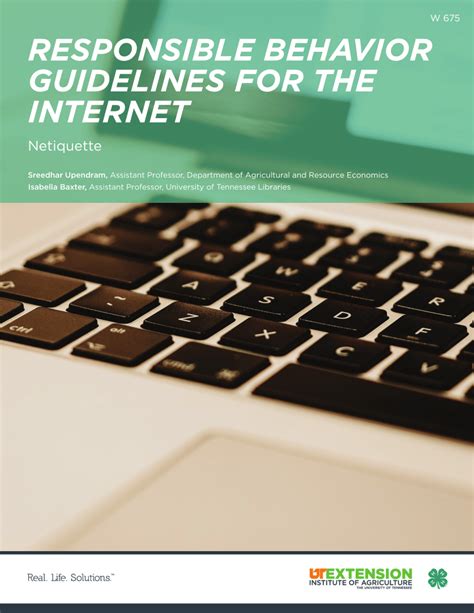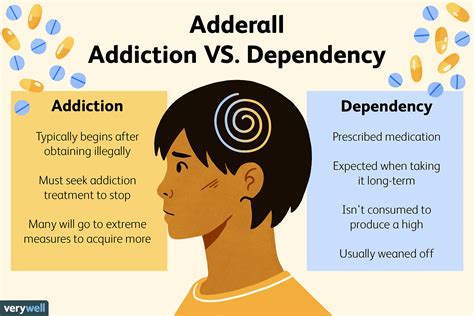Intro
Discover key Amphetamine Dextroamphetamine facts, including uses, side effects, and addiction risks, to understand this central nervous system stimulant and its impact on ADHD treatment and mental health.
Amphetamine dextroamphetamine, commonly known by the brand name Adderall, is a prescription medication used to treat attention deficit hyperactivity disorder (ADHD) and narcolepsy. This medication is a combination of two stimulant drugs, amphetamine and dextroamphetamine, which work together to increase the levels of certain neurotransmitters in the brain, such as dopamine and norepinephrine. By doing so, it helps improve focus, attention, and impulse control in individuals with ADHD, while also helping to regulate sleep patterns in those with narcolepsy.
The importance of understanding amphetamine dextroamphetamine facts cannot be overstated, especially given the widespread use and potential for misuse of this medication. With the rising prevalence of ADHD and the increasing reliance on prescription medications to manage symptoms, it's crucial for patients, parents, and healthcare professionals to be well-informed about the benefits, risks, and proper use of amphetamine dextroamphetamine. This knowledge can help ensure safe and effective treatment, minimize the risk of side effects, and prevent potential complications.
The use of amphetamine dextroamphetamine has become a topic of considerable interest and debate in recent years, with some advocating for its benefits in improving cognitive function and productivity, while others raise concerns about its potential for abuse and long-term effects on mental and physical health. As such, it's essential to delve into the facts surrounding this medication, exploring its mechanisms of action, therapeutic uses, potential side effects, and guidelines for responsible use.
Introduction to Amphetamine Dextroamphetamine

Amphetamine dextroamphetamine is classified as a central nervous system stimulant, which means it affects the brain and nervous system to produce its therapeutic effects. The medication is available in various formulations, including immediate-release and extended-release tablets or capsules, allowing for flexible dosing options tailored to the individual's needs. The immediate-release form is typically taken 2-3 times a day, while the extended-release form is taken once daily, usually in the morning.
How Amphetamine Dextroamphetamine Works
The precise mechanism of action of amphetamine dextroamphetamine involves the enhancement of dopamine and norepinephrine levels in the brain. These neurotransmitters play critical roles in attention, motivation, and impulse control. By increasing their availability, amphetamine dextroamphetamine helps mitigate the symptoms of ADHD, such as inattention, hyperactivity, and impulsivity. In the case of narcolepsy, the medication helps regulate the sleep-wake cycle, reducing excessive daytime sleepiness and promoting wakefulness.Benefits of Amphetamine Dextroamphetamine

The benefits of amphetamine dextroamphetamine are well-documented, particularly in the management of ADHD and narcolepsy. For individuals with ADHD, the medication can significantly improve focus, reduce impulsivity and hyperactivity, and enhance overall cognitive function. This, in turn, can lead to better academic or work performance, improved relationships, and increased self-esteem. In narcolepsy patients, amphetamine dextroamphetamine can greatly reduce excessive daytime sleepiness, improve alertness, and enhance the quality of life.
Potential Side Effects and Risks
While amphetamine dextroamphetamine is generally considered safe and effective when used as prescribed, it can cause a range of side effects. Common side effects include insomnia, dry mouth, loss of appetite, weight loss, anxiety, and irritability. More serious side effects, although rare, can include increased heart rate and blood pressure, psychiatric problems such as hallucinations or aggressive behavior, and the potential for dependence and addiction.Guidelines for Responsible Use

Given the potential risks associated with amphetamine dextroamphetamine, it's crucial to follow guidelines for responsible use. Patients should only use the medication as directed by their healthcare provider, avoiding any adjustments to the dose or frequency without medical supervision. Regular monitoring of blood pressure, heart rate, and mental status is also recommended to promptly identify any adverse effects. Furthermore, individuals should be aware of the signs of misuse or addiction, such as taking higher doses than prescribed, using the medication for non-medical reasons, or experiencing withdrawal symptoms when attempting to stop use.
Alternatives and Complementary Therapies
For some individuals, alternative or complementary therapies may be considered in conjunction with or instead of amphetamine dextroamphetamine. These can include behavioral therapies such as cognitive-behavioral therapy (CBT), lifestyle modifications such as dietary changes and regular exercise, and other non-stimulant medications. It's essential for patients to discuss these options with their healthcare provider to determine the most appropriate treatment plan based on their specific needs and health status.Prevalence and Misuse of Amphetamine Dextroamphetamine

The prevalence of amphetamine dextroamphetamine use has increased significantly over the years, reflecting both the growing diagnosis of ADHD and the medication's perceived benefits for cognitive enhancement. However, this trend is accompanied by concerns about misuse, particularly among young adults and students seeking to enhance academic performance. The misuse of amphetamine dextroamphetamine can lead to serious health consequences, including addiction, cardiovascular problems, and psychiatric issues, underscoring the need for education and prevention efforts.
Education and Prevention
Educational initiatives and prevention strategies are critical in addressing the misuse of amphetamine dextroamphetamine. These efforts should focus on raising awareness about the risks associated with the non-medical use of prescription stimulants, promoting responsible medication use, and encouraging healthy lifestyle choices. Schools, communities, and healthcare systems play vital roles in these endeavors, providing support and resources for individuals struggling with substance use disorders and promoting a culture of safety and well-being.Future Directions and Research

Ongoing research into amphetamine dextroamphetamine and other stimulant medications is essential for advancing our understanding of their mechanisms, improving treatment outcomes, and minimizing risks. Future studies should explore novel formulations and delivery systems, investigate the long-term effects of stimulant use, and develop more effective strategies for preventing and treating substance use disorders. Additionally, research into non-pharmacological interventions and personalized medicine approaches may offer new avenues for managing ADHD and narcolepsy, potentially reducing reliance on medication and enhancing the quality of life for affected individuals.
Conclusion and Final Thoughts
In conclusion, amphetamine dextroamphetamine is a valuable medication for the treatment of ADHD and narcolepsy, offering significant benefits when used responsibly and under medical supervision. However, its potential for misuse and the risks associated with long-term use necessitate careful consideration and ongoing education. By promoting awareness, encouraging responsible use, and supporting research into new treatments and prevention strategies, we can work towards optimizing the therapeutic potential of amphetamine dextroamphetamine while minimizing its risks.What is amphetamine dextroamphetamine used for?
+Amphetamine dextroamphetamine is primarily used to treat attention deficit hyperactivity disorder (ADHD) and narcolepsy.
How does amphetamine dextroamphetamine work?
+It works by increasing the levels of certain neurotransmitters in the brain, such as dopamine and norepinephrine, which helps improve focus, attention, and impulse control in ADHD patients and regulates sleep patterns in those with narcolepsy.
What are the common side effects of amphetamine dextroamphetamine?
+Common side effects include insomnia, dry mouth, loss of appetite, weight loss, anxiety, and irritability. More serious side effects can include increased heart rate and blood pressure, psychiatric problems, and the potential for dependence and addiction.
Can amphetamine dextroamphetamine be addictive?
+Yes, amphetamine dextroamphetamine has the potential for dependence and addiction, especially when used in high doses or for prolonged periods without medical supervision.
How can I use amphetamine dextroamphetamine responsibly?
+Use the medication only as directed by your healthcare provider, avoid any adjustments to the dose or frequency without medical supervision, and be aware of the signs of misuse or addiction.
We invite you to share your thoughts, experiences, or questions about amphetamine dextroamphetamine in the comments below. Your input can help create a more informed and supportive community for those affected by ADHD and narcolepsy. Additionally, if you found this article informative, please consider sharing it with others who might benefit from this information. Together, we can promote awareness, encourage responsible medication use, and support ongoing research into these conditions.
